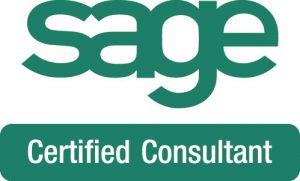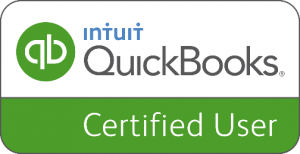
A sales invoice in financial accounting is a tool that a company uses to communicate to clients about the sums that are due in exchange for goods that have been sold. A sales invoice should include information about which items the customer has purchased, the quantities he has bought, discounts he has received, and the total amount he owes. In addition, a sales invoice should contain a brief summary of the terms of the transaction, such as the acceptable lag time between the sale and the payment.
TAX INVOICES
South Africa operates a VAT system whereby businesses (vendors) are allowed to deduct the VAT incurred on business expenses (input tax) from the VAT collected on the supplies made by the business (output tax). The most important document in such a system is the tax invoice. Without a proper tax invoice a business cannot deduct input tax on business expenses. The VAT Act prescribes that a tax invoice must contain certain details about the taxable supply made by the business as well as the parties to the transaction. The VAT Act also prescribes the timeframe within which a tax invoice must be issued (i.e. 21 days from the time the supply was made).
A business is required to issue a full tax invoice when the price is more than R5 000 (referred to as consideration for the supply) and may issue an abridged tax invoice when the consideration for the supply is R 5 000 or less than R5 000. If the consideration for the supply is R50 or less, a tax invoice is not required. However, a document such as a till slip or sales docket indicating the VAT charged by the supplier will be required to verify the input tax deducted.
As from 8 January 2016, the following information must be reflected on a tax invoice for it to be considered valid:
- Contains the words “Tax Invoice”, “VAT Invoice” or “Invoice”
- Name, address and VAT registration number of the supplier
- Name, address and where the recipient is a vendor, the recipient’s VAT registration number
- Serial number and date of issue of invoice
- Accurate description of goods and /or services (indicating where applicable that the goods are second hand goods)
- Quantity or volume of goods or services supplied
- Value of the supply, the amount of tax charged and the consideration of the supply (value and the tax)
What are the different types of invoices?
Invoices come in many varieties, each with their own name. Here are some of the more common.
- Sales invoice
If you send an invoice, then it’s a sales invoice (if you receive it, it’s a purchase invoice). - Past due invoice
When an invoice hasn’t been paid, some businesses will resend it with an overdue stamp on it. - Interim invoice
If you require progress payments on a big piece of work, you could send an interim invoice. They’re usually issued monthly, and charge for the work done during that period. - Final invoice
The last in a series of interim invoices, a final invoice signals that the work is complete and that no other invoices will follow. - Recurring invoice
If you charge your customer the same amount every time, you can just send a recurring invoice. These are great for subscriptions or leases. - Pro forma invoice
A pro forma invoice shows items and costs, but they’re not a legal record of a sale. They’re usually used as price quotes, and to identify the value of items in a shipment. - Commercial invoice
While the prices on a pro forma invoice can change at any time, a commercial invoice is legally binding. If you issue one of these, you can’t change the price until the invoice has expired.
Make an impression
Every invoice you generate sends a message about your business. When your customers receive your invoices, they will form ideas about your organisation.
A poorly-designed, inaccurate invoice says that your business is disorganised and badly run. But an accurate, well-designed, professional invoice speaks volumes about the quality of your company.
So invoicing isn’t just about requesting payment for products or services. It’s also an extension of your company’s branding and marketing efforts.
For these reasons it pays to make sure your invoices are professional looking. It’s even more important that they’re accurate. In this guide we’ll look at how you can achieve all this.
- Get the numbers right
If you strip away the detail from an invoice, what’s left is a demand for payment. It’s a piece of paper or an electronic document that’s asking your customer for money.
So the first point to consider is the amount of money you’re requesting. It has to be correct every time. If you send out inaccurate invoices you probably won’t be in business for long. Your customers will be unimpressed:
- If you charge too much they’ll assume you’re acting dishonestly.
- If you charge too little they’ll suspect you’re incompetent.
Neither option is good! So get the numbers right. There are three main steps to this:
- Track your hours or product sales accurately. Time-tracking software and POS tools will help here). Ideally they should connect directly to your accounting system. Then you won’t have to enter the same information twice.
- Create an invoice that has accurate numbers. With good accounting software this will be easy. You’ll be able to quickly generate an invoice using the sales data you’ve already collected.
- Invoice in good time. Don’t wait months between invoices, as people’s memories fade. If you let too much time pass, your customer may have forgotten some of the work you did. If they believe you’re charging too much, it will have a negative effect on your business.
These three elements are vital to the invoicing process. Get them right and you’ll have the basics established. But that’s just the start.
- Invoice regularly and often
Invoicing is something you should get into the habit of doing. It’s a core part of your business, and you should treat it as such.
Your cash flow depends on the efficiency of your invoicing process. If you wait until the end of every month before invoicing, you’re wasting time. You are also losing money.
Get into the habit of invoicing as soon as you finish a piece of work or make a sale. Good accounting software will do this for you. You can automate most of the invoicing process, saving you time and money.
This will also help your customers. They have probably budgeted to pay you within a specific time. Invoicing promptly will help them keep their accounts in order to.


